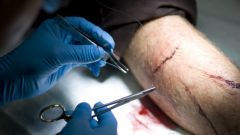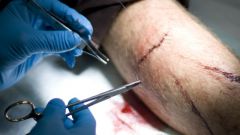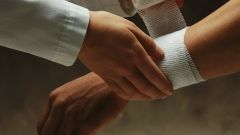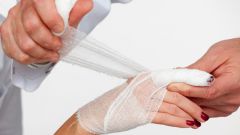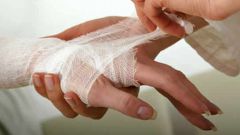You will need
- - disinfectant;
- Vata;
- - gauze.
Instruction
1
The first step in the treatment of the wound is clean. This is necessary in order to reduce the risk of infection. From the depth of the lesion depend on your further actions.
2
Rate the severity of the damage. Superficial wounds usually do not bleed much, so their handling is time-consuming.
3
Put the damaged area under a stream of cool running water. Gauze pad gently remove visible dirt. Try not to RUB the wound, it will cause pain and may further injure the injury.
4
Case of severe contamination or extensive damage, clean the wound with gauze moistened with a soap solution.
5
Treat the wound with hydrogen peroxide. As a disinfectant you can also use chlorhexidine.
6
If the wound is deep, additional task is to stop the bleeding. In this case, it is undesirable to wash out the injury with water, as there is a risk of infection and complications. Moisten the cotton wool with hydrogen peroxide and wipe several times bleeding place. If the wound has a foreign body (e.g. glass), carefully remove it.
7
Clean the skin around the wound with a sterile gauze napkin. Treat the edges of the damage with iodine.
8
Deep wound cover with a sterile bandage. It will protect it from secondary contamination.
Note
Provide treatment of the wound only with clean hands. All instruments relating to places with disturbed integrity of the skin must be pre-sterilized.
Useful advice
Instead of hydrogen peroxide you can use potassium permanganate solution. A few of the crystal powder dissolve in 100 ml of water, mix thoroughly with liquid. Moisten the cotton wool in the resulting pale pink solution and gently wipe the wound.

